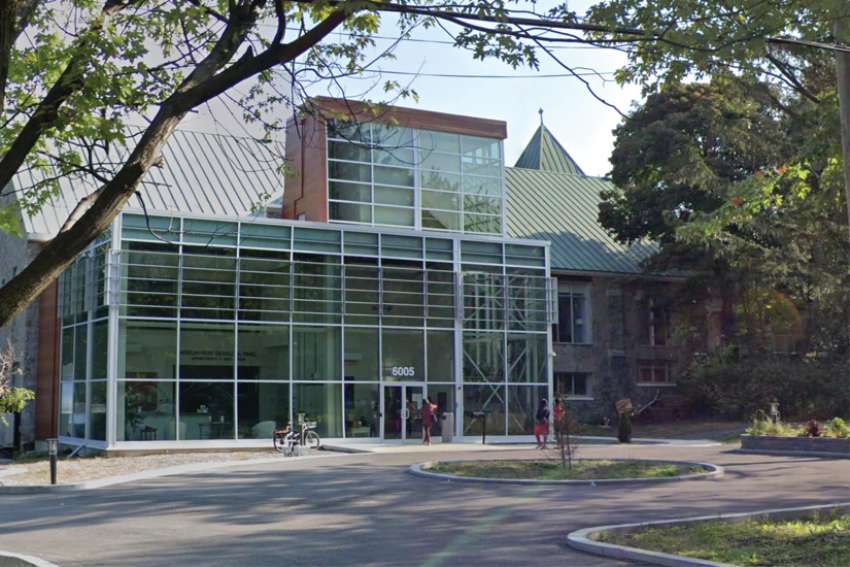To enter St. Raphael’s Palliative Care Home and Day Centre in the city’s Outremont borough is to witness the good that comes when people of the faith combine with bright, imaginative community-ordered minds to turn a dying church into a locus of life.
It’s also to walk the Church’s long path of hope and charity that connects today’s St. Raphael to, say, the historic work of Jeanne Mance establishing Hotel Dieu as Ville Marie’s first hospital in the 17th century or the Grey Nuns nursing Irish immigrant typhus victims in the 19th century.
Fittingly, the physical entrance to the palliative care centre has been redeveloped as a light-filled atrium that leads to what was once the basement of St. Raphael the Archangel Church, an English-speaking parish that served its community for almost 80 years before declining numbers forced its closure in 2009. That same year, work began in earnest to turn the building into a centre for end-of-life care rather than it being sold off as another former house of worship cum condo complex.
Enter the archdiocese. It made the land where the church stood available for non-faith-based palliative care while insisting that the new structure could not be used for euthanasia or assisted suicide. It took seven years of work before ground was broken for the redevelopment. It was a full decade before the palliative care centre opened in the fall of 2019.
Barely three months after St. Raphael opened, COVID-19 slammed into the plans for the 12-bed facility, restricting its capacity for patients and slowing down some intentions for what, in a church context, might be called evangelizing the public about the real meaning of palliative care.
Still, if medical director Dr. Krista Lawlor can’t be described as a palliative apostle, she leaves no trace of doubt about her conviction that communicating the truth about it is key to limiting the idea that MAiD is the first, best alternative as the end of life approaches.
“One of the myths around palliative care is that it is what is done when ‘there is nothing left to be done,’ and this message is unfortunately reinforced in our medical language as people get sicker,” Lawlor says after guiding me through a visit to St. Raphael’s.
The wholesale remodelling of the church interior — the old bell tower has been renewed as a “quiet room” — is ordered toward making space in which the ending of a life is a time for community, for gathering of family and friends, for massage and acupuncture, for art and music therapy.
“Palliative care is not about withdrawing, abandoning or ‘giving up,’ ” Lawlor emphasizes. “Unfortunately, this is still the message that many patients and their families receive.”
To counter that misimpression, she and the St. Raphael team have made the facility a training centre for medical students from McGill and the Université de Montréal, but also for the city’s schools of nursing and social work. There are plans, COVID permitting, to expand even further to help a variety of businesses, community agencies and even high schoolers encounter palliative care.
“The goal (would be) embedding the hospice within the community and demystifying palliative care while providing opportunities for learning, growth and connection for everyone involved,” Lawlor says.
It’s a vision diametrically at odds with the fate that befell the Delta Hospice Society’s Irene Thomas palliative care centre across the continent in suburban Vancouver. There, government big-footing on behalf of MAiD has left the 10-bed facility sitting empty. The Delta Hospice Society itself has been evicted and its property expropriated because it refused to permit medically-administered death.
To speak with DHS board president Angelina Ireland — who endured months of public vilification during the battle to save the Irene Thomas Centre — is to come away deeply pessimistic about the inexorable march of MAiD. It’s to begin to question the hope of palliative care’s proponents ever being able to stave off the expanding darkness.
But faith shaken is by no means faith given up. With its prescience in helping St. Raphael open, the Archdiocese of Montreal has created a model that people of faith and of community mindedness can keep alive with the light of hope.
(Stockland is publisher of Convivium.ca and a senior fellow with Cardus.)

